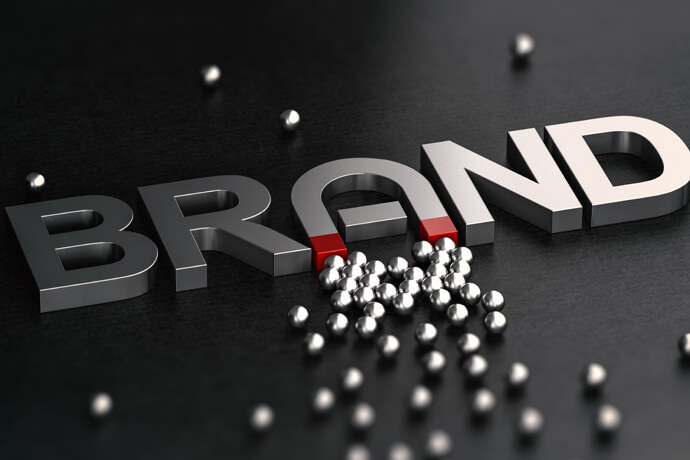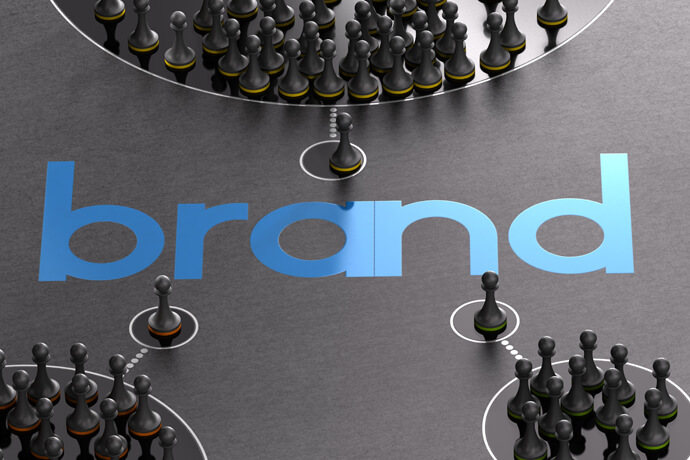 SPEAKERS
SPEAKERS
 TOPICS
TOPICS
Increase your brand visibility and reach your desired audience. Boost your ROI and build lasting relationships. Learn how to identify the right opportunities and create successful campaigns.

For a firm to succeed in today's fiercely competitive market, a strong brand presence is crucial. Strategic sponsorship and collaborations are efficient strategies to raise the profile and reputation of your company. These partnerships provide chances for expanded market reach, audience engagement, and brand visibility.
Partnerships and sponsorships give companies a special way to interact with their target market and build their brand's reputation. You may leverage their current reach and reputation by linking your brand with pertinent events, businesses, or personalities.
Your brand gains credibility and trust from this relationship, which raises brand awareness and recognition. Whether it's sponsoring a significant industry conference or working with a local nonprofit, the correct sponsorship and partnerships may strengthen your brand's standing in the market.
You should keep your brand's goals and target market in mind while you look for sponsorship and partnership possibilities. Look for possibilities that are consistent with the goals, values, and target audience of your brand. Think of gatherings, groups, celebrities, or media sources that appeal to your target population.
To ensure the greatest impact, it's also critical to assess the visibility and reach of your potential partners. By completing in-depth research, utilising industry networks, and connecting with your current clients, you may find the prospects that are best for you. You must have a well-defined business strategy that uses clever marketing strategies.

1.Define clear objectives:
Before entering into any sponsorship or partnership agreement, establish clear objectives that align with your brand's overall marketing strategy. Whether it's increasing brand awareness, driving website traffic, or generating leads, defining your goals will help guide your decision-making process and measure success.
Customize your sponsorship or partnership activation to maximize impact. Collaborate with partners for creating unique experiences, exclusive content, or co-branded products/services that resonate with your target audience. This tailored approach enhances the brand perception and builds stronger connections with your customers.
Utilize various marketing channels, such as YouTuber Marketing, social media, email marketing, and content marketing, to amplify your sponsorship or partnership efforts.
Share engaging content, behind-the-scenes stories, or exclusive offers to create buzz and increase visibility. Reach wider audiences and enhance the overall impact by cross-promoting with partners.
Make your personnel participate in efforts linked to alliances and sponsorships. By urging them to volunteer at events or post about their experiences on social media, you may motivate them to take an active role in activities.
When you involve your team members, you create an opportunity for building brand ambassadors. They are the team members who can authentically represent your brand and enhance its reputation.
Measuring the return on investment (ROI) of sponsorship and partnership campaigns is significant for understanding their effectiveness and making informed decisions for future collaborations.
Define key performance indicators (KPIs) aligned with your objectives, such as website traffic, social media engagement, sales revenue, or brand sentiment. Utilize tracking tools, unique promo codes, custom landing pages, or surveys to capture relevant data.
Mark the areas for improvement by regularly analyzing and evaluating the data to assess the campaign's success.
Sponsorships and partnerships are often used interchangeably, but they have distinct differences. Sponsorships and partnerships are both popular strategies used by brands to build their presence and engage with their target audience. There are significant disparities between the two strategies despite some similarities.
Here's a list highlighting the differences between sponsorships and partnerships in brand building:
- Sponsorship: Sponsorships are primarily focused on providing financial support or resources to an event, individual, or organization. This is done in exchange for brand visibility and exposure.
- Partnership: In a partnership, two or more organisations collaborate for the gain of both.
They collaborate to achieve long-term value and growth as a shared objective.
- Sponsorship: Sponsorships are typically transactional. A company provides financial support or resources to another entity in exchange for promotional benefits and brand visibility.
- Partnership: Partnerships are more collaborative and involve a deeper level of engagement and shared objectives. They often entail a mutual exchange of resources, expertise, and joint decision-making.
- Sponsorship: Sponsorships are typically time-bound and revolve around a specific event, campaign, or duration. The sponsorship agreement terminates once the event or campaign finishes.
- Partnership: Partnerships tend to be more long-term in nature, extending beyond a single event or campaign. They often involve a contractual agreement with defined terms and a focus on sustained collaboration and growth.
- Sponsorship: The primary goal of a sponsorship is to boost brand exposure, reach a specific target audience, and create positive associations with the sponsored entity. The sponsoring company aims at achieving marketing and promotional benefits through the association.
- Partnership: Shared goals and objectives drive partnerships. The involved parties work together to achieve specific outcomes or solve a problem that benefits mutually to both organizations. The focus is on long-term collaboration and meeting common goals.
- Sponsorship: Sponsors typically have a limited involvement beyond the financial or resource contribution. The primary role of sponsors is to gain exposure through branding opportunities associated with the sponsored entity.
- Partnership: Partners actively engage with each other, sharing expertise, resources, and responsibilities. They work together to achieve mutual objectives and may participate in joint marketing efforts, product development, or other collaborative initiatives.
- Sponsorship: In sponsorship, the sponsoring company typically provides financial support, resources, or products/services. They do this in lieu of promotional benefits. The sponsorship agreement is often a one-way financial transaction from the sponsor to the sponsored entity.
- Partnership: Partnerships involve a more balanced financial commitment from both parties. Each partner contributes resources, capital, or expertise to achieve the agreed-upon objectives. The financial involvement is usually mutual and based on a shared investment.
- Sponsorship: In sponsorships, the sponsoring entity typically bears the financial risk, while the sponsored entity receives the benefits. The reward for the sponsor comes in the form of increased brand exposure and association.
- Partnership: Partners share both the risks and rewards associated with the collaboration. They invest resources, share expertise, and mutually benefit from the success or failure of the partnership's initiatives.
- Sponsorship: Sponsors often seek brand integration through visible branding opportunities. These include logos, banners, or endorsements at events or during specific activities. The focus is on leveraging the sponsored entity's platform to increase brand recognition.
- Partnership: A further degree of brand integration is included in partnerships, when both parties collaborate on joint marketing initiatives, co-branded goods, or integrated customer journeys. The goal is to develop a seamless and consistent brand identity that makes use of both partners' advantages.
It is vital to remember that sponsorships and collaborations might have different unique terms and conditions. They depend on the context, industry, and the agreements reached between the involved parties.
Sponsorship and partnerships offer immense potential for elevating your brand's visibility, collaboration, and promotion. You can unlock the power of sponsorship and partnerships for your brand by carefully selecting the right opportunities, tailoring your approach, and measuring the ROI.
Remember to actively engage your employees, leverage various marketing channels, and establish strong relationships with your partners. You can propel your brand to new heights in the competitive market by harnessing the collective strength of collaboration.
Q: What is the power of sponsorship in marketing?
In marketing, sponsorship provides an opportunity for brands to increase visibility, and reach target audiences. It also helps to escalate brand reputation through association with a particular event, organization, or individual.
Q: How does sponsorship impact brands?
Sponsorship impacts brands by improving brand recognition and creating positive brand associations. Additionally, it allows access to a captive audience actively engaged with the sponsored entity.
Q: How does sponsorship help build a brand?
A: Sponsorship helps build a brand by leveraging the existing reputation and reach of the sponsored entity. It allows brands to tap into the audience and credibility of the entity. Thus it enhances brand awareness and perception.
Q: Why is it important for brands to activate their sponsorships?
A: Activating sponsorships is important for brands to maximize the benefits and ROI of their investments. Brands can increase visibility, engagement, and overall impact by proactively promoting and leveraging their sponsorships.